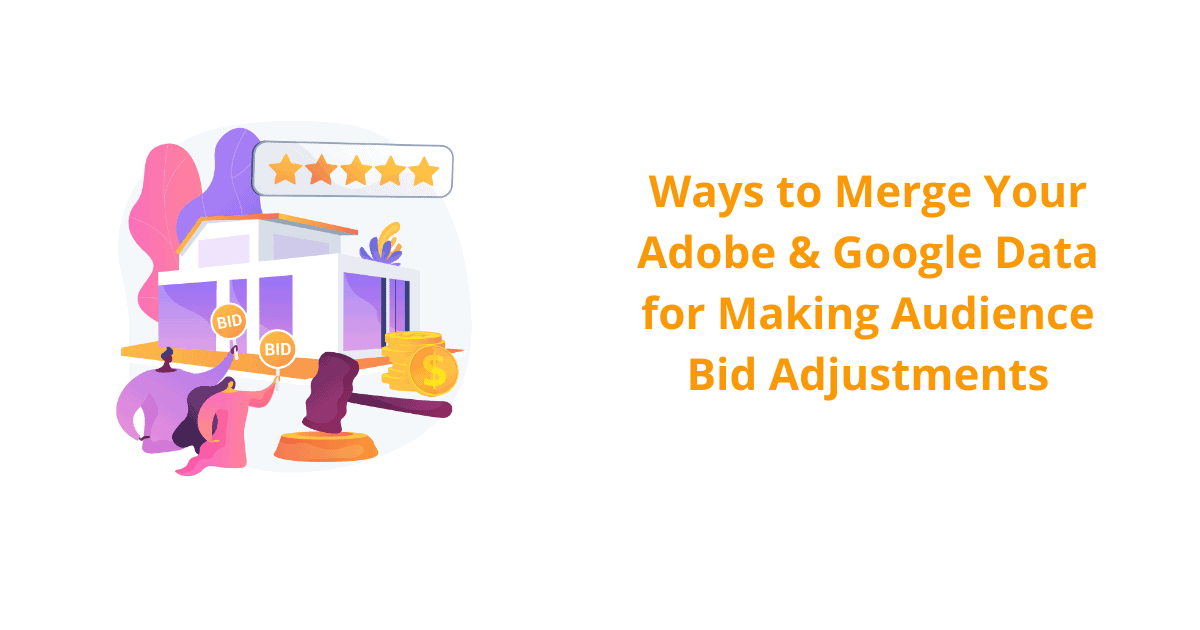Methods to Combine Adobe & Google Data for Audience Bid Adjustments

Audience bid adjustment is a tool used by advertisers to analyse the performance of ads and make necessary recommendations based on the target audience. The analysis is done either at the ad group level or at the campaign level. The bid adjustment tool displays the options and the specific details of different metrics that you would get with each adjustment option provided.
What Is Google Ads Bid Adjustment?
Google ads bid adjustment allows you as an advertiser to know how often to display your ads based on when, where and how potential customers search for information. This way, you can control the frequency of the ads appearing to make it count for your business. Once you know the behavioural pattern of your target consumers, you will know when to make your ads more visible. From the data, you may gather intel that clicks from specific locations at certain times during the day will carry a high possibility of conversion.
Various Revenue Tracking Platforms For Google Ads Bidding
There are multiple sources available for users to track their revenue. Some of your customers may use Adobe instead of Google Pixels. This can make your Google post-click data outdated. It can also be difficult to carry out regular enhancements and improvements to your Google ads bidding campaign. Generating query reports and audience implementation adjustments become more complicated. However, there is a way that you can work around this and make your results more accurate.
Read on to see how you can merge data from both Adobe and Google to conduct your test across all your accounts.
The process mentioned here is a tried and tested process that guarantees a proper solution for the problem at hand. It has been used on an account to test the audience bid modifiers and the merged data can be used to your advantage.
Why Is The Audience So Important?
In a Google ads bidding campaign with emphasis on PPC, the audience is key for success. With changes constantly happening to maintain security and privacy, the audience plays a crucial role in the bid adjustment process. However, is it possible to use the audience correctly when you do not have the right information with reference to Google post-click data? Follow these steps to unify Adobe’s post-click data with that of Google’s pre-click data.
Merging Adobe With Google For Google Ads Bid Adjustments
These steps can be implemented even for an offshore PPC management campaign.
- Create and Set-up your workplace: The first step in the process is to build your workspace. Start with a blank Google sheet. Next, you build the three tabs relevant for collecting and merging your data. The tabs can be named “AMO Data”, “Google Data” and “Merged Data”. This is what you can consider as your workspace.
- Create a full report from the data pulled out: It’s obvious that you cannot utilize the Google post-click data for this step. However, you can still go ahead and pull a full report from Google. From experience, it has been observed that a 90-day interval for these reports works best for optimizations. With Adobe, you need to create an “AdWords and Bing Audience Target Report”. This can be generated from the Adobe Advertising Cloud space. The next step in creating the report is to select the account or campaign that you want to test and add the matching KPI’s for the ad campaign.
- Merging the data: The final step in this process is to merge the data. You need to use the reports here and paste the data from the pulled reports within the workspace – Google sheet that you have created. The data has to go into the respective tabs. Finally, you need to open up the tab “Merged Data”.
For merging the data, use to top cells to create the headings you need like Campaign, Audience and their ID, Cost etc. Every cell should be referenced with the data from the AMO tab. Or you could use the formula “=index(‘Google Data’!E40,MATCH($A2:$B2,’Google Data’!$A40:$B40,0))” . With this formula, you can populate the cells with the corresponding audience ID to your campaigns.
By doing the above, you can see the actual data and use it to decide on the correct bid adjustments for your target audience and place them within Google. This will make your Google ads bidding process highly successful.

